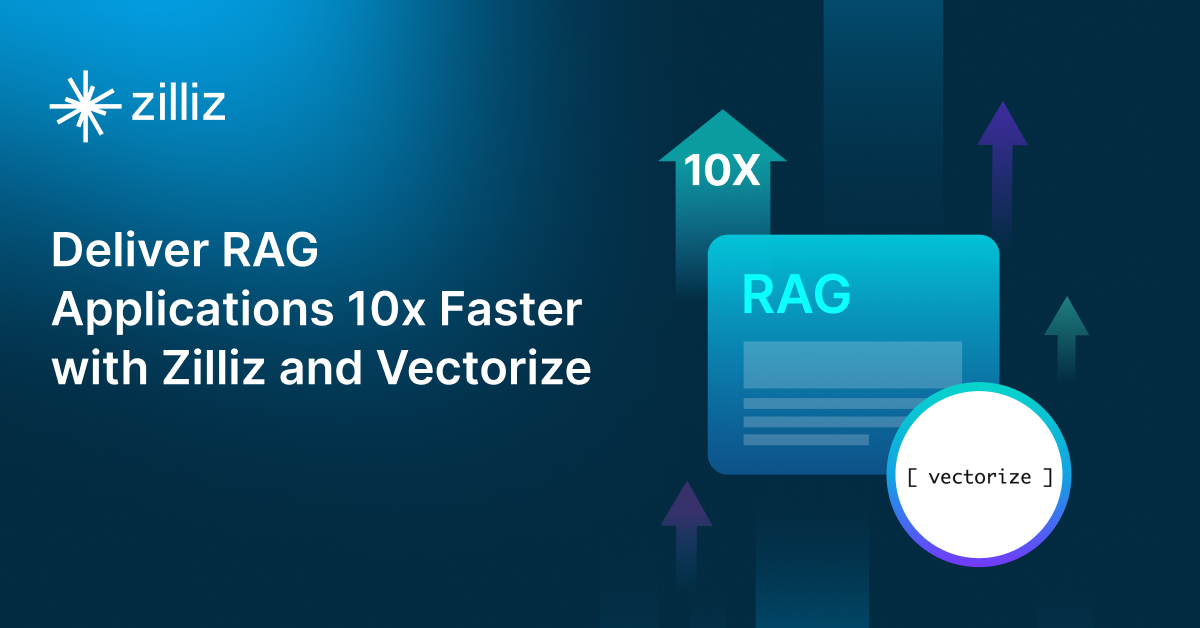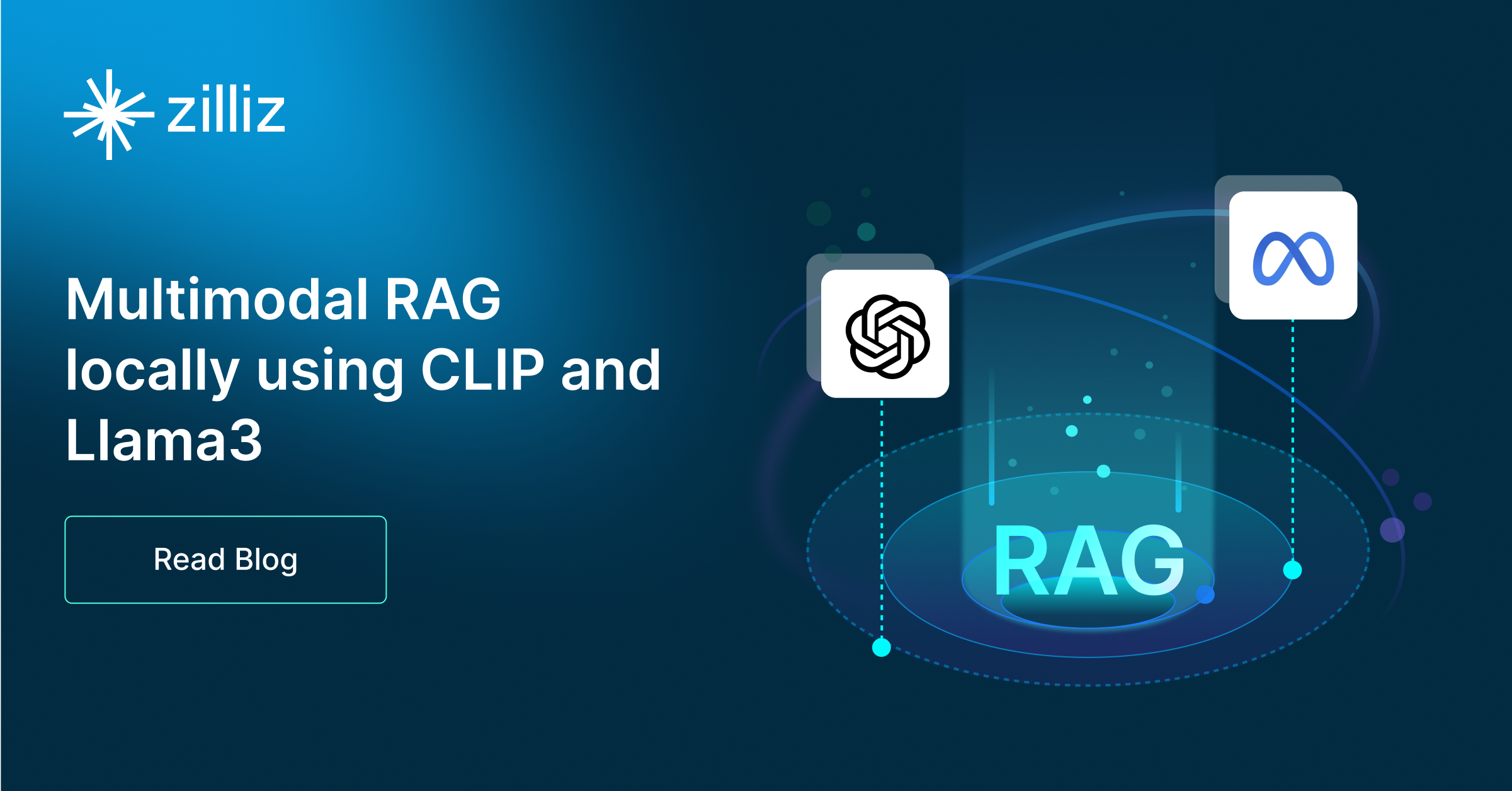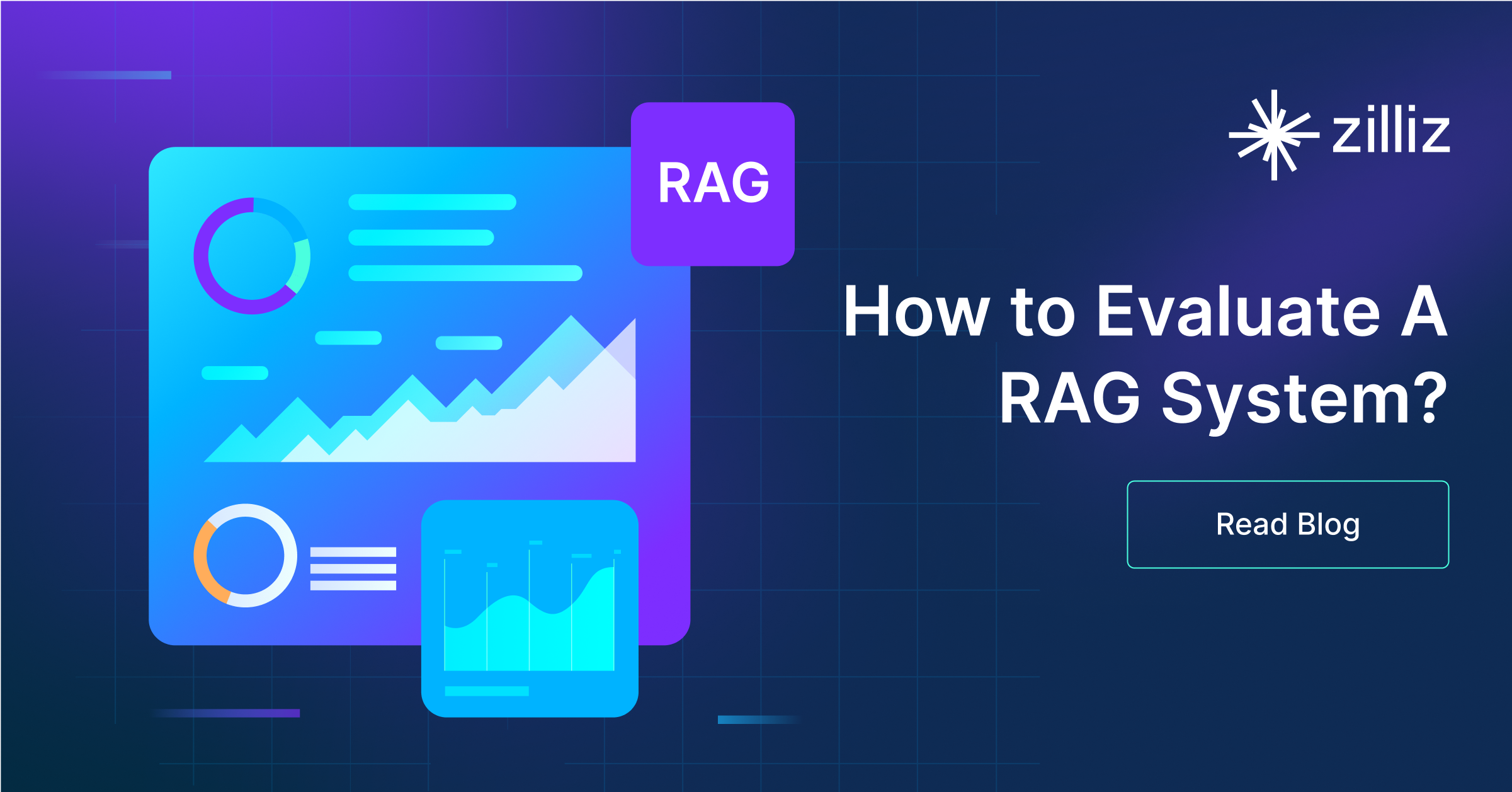Build RAG Chatbot with Haystack, Zilliz Cloud, Cohere Command, and Mistral Embed
Introduction to RAG
Retrieval-Augmented Generation (RAG) is a game-changer for GenAI applications, especially in conversational AI. It combines the power of pre-trained large language models (LLMs) like OpenAI’s GPT with external knowledge sources stored in vector databases such as Milvus and Zilliz Cloud, allowing for more accurate, contextually relevant, and up-to-date response generation. A RAG pipeline usually consists of four basic components: a vector database, an embedding model, an LLM, and a framework.
Key Components We'll Use for This RAG Chatbot
This tutorial shows you how to build a simple RAG chatbot in Python using the following components:
- Haystack: An open-source Python framework designed for building production-ready NLP applications, particularly question answering and semantic search systems. Haystack excels at retrieving information from large document collections through its modular architecture that combines retrieval and reader components. Ideal for developers creating search applications, chatbots, and knowledge management systems that require efficient document processing and accurate information extraction from unstructured text.
- Zilliz Cloud: a fully managed vector database-as-a-service platform built on top of the open-source Milvus, designed to handle high-performance vector data processing at scale. It enables organizations to efficiently store, search, and analyze large volumes of unstructured data, such as text, images, or audio, by leveraging advanced vector search technology. It offers a free tier supporting up to 1 million vectors.
- Cohere Command: A generative AI model designed for high-accuracy text generation and instruction-following, optimized for business applications. Strengths include coherent output, robust handling of complex prompts, and enterprise-grade reliability. Ideal for automating customer interactions, generating structured content (reports, emails), data extraction, and summarization, enhancing operational efficiency and scalability.
- Mistral Embed: A high-performance embedding model designed to convert text into dense vector representations, capturing semantic meaning for tasks like retrieval, clustering, and similarity analysis. It excels in efficiency, multilingual support, and scalability, making it ideal for semantic search engines, multilingual content organization, and large-scale data processing applications requiring rapid, context-aware text analysis.
By the end of this tutorial, you’ll have a functional chatbot capable of answering questions based on a custom knowledge base.
Note: Since we may use proprietary models in our tutorials, make sure you have the required API key beforehand.
Step 1: Install and Set Up Haystack
import os
import requests
from haystack import Pipeline
from haystack.components.converters import MarkdownToDocument
from haystack.components.preprocessors import DocumentSplitter
from haystack.components.writers import DocumentWriter
Step 2: Install and Set Up Cohere Command
To use Cohere models with Haystack for a RAG pipeline, you need to get a Cohere API Key first. You can write this key in:
- The
api_keyinit parameter using Secret API - The
COHERE_API_KEYenvironment variable (recommended)
Now, let's install and set up the Cohere model.
pip install cohere-haystack
from haystack_integrations.components.generators.cohere import CohereGenerator
generator = CohereGenerator(model="command")
Step 3: Install and Set Up Mistral Embed
pip install mistral-haystack
from haystack_integrations.components.embedders.mistral.text_embedder import MistralTextEmbedder
from haystack import Document
from haystack_integrations.components.embedders.mistral.document_embedder import MistralDocumentEmbedder
text_embedder = MistralTextEmbedder(api_key=Secret.from_token("<your-api-key>"), model="mistral-embed")
document_embedder = MistralDocumentEmbedder(api_key=Secret.from_token("<your-api-key>"), model="mistral-embed")
Step 4: Install and Set Up Zilliz Cloud
pip install --upgrade pymilvus milvus-haystack
from milvus_haystack import MilvusDocumentStore
from milvus_haystack.milvus_embedding_retriever import MilvusEmbeddingRetriever
document_store = MilvusDocumentStore(connection_args={"uri": ZILLIZ_CLOUD_URI, "token": ZILLIZ_CLOUD_TOKEN}, drop_old=True,)
retriever = MilvusEmbeddingRetriever(document_store=document_store, top_k=3)
Step 5: Build a RAG Chatbot
Now that you’ve set up all components, let’s start to build a simple chatbot. We’ll use the Milvus introduction doc as a private knowledge base. You can replace it your own dataset to customize your RAG chatbot.
url = 'https://raw.githubusercontent.com/milvus-io/milvus-docs/refs/heads/v2.5.x/site/en/about/overview.md'
example_file = 'example_file.md'
response = requests.get(url)
with open(example_file, 'wb') as f:
f.write(response.content)
file_paths = [example_file] # You can replace it with your own file paths.
indexing_pipeline = Pipeline()
indexing_pipeline.add_component("converter", MarkdownToDocument())
indexing_pipeline.add_component("splitter", DocumentSplitter(split_by="sentence", split_length=2))
indexing_pipeline.add_component("embedder", document_embedder)
indexing_pipeline.add_component("writer", DocumentWriter(document_store))
indexing_pipeline.connect("converter", "splitter")
indexing_pipeline.connect("splitter", "embedder")
indexing_pipeline.connect("embedder", "writer")
indexing_pipeline.run({"converter": {"sources": file_paths}})
# print("Number of documents:", document_store.count_documents())
question = "What is Milvus?" # You can replace it with your own question.
retrieval_pipeline = Pipeline()
retrieval_pipeline.add_component("embedder", text_embedder)
retrieval_pipeline.add_component("retriever", retriever)
retrieval_pipeline.connect("embedder", "retriever")
retrieval_results = retrieval_pipeline.run({"embedder": {"text": question}})
# for doc in retrieval_results["retriever"]["documents"]:
# print(doc.content)
# print("-" * 10)
from haystack.utils import Secret
from haystack.components.builders import PromptBuilder
retriever = MilvusEmbeddingRetriever(document_store=document_store, top_k=3)
text_embedder = MistralTextEmbedder(api_key=Secret.from_token("<your-api-key>"), model="mistral-embed")
prompt_template = """Answer the following query based on the provided context. If the context does
not include an answer, reply with 'I don't know'.\n
Query: {{query}}
Documents:
{% for doc in documents %}
{{ doc.content }}
{% endfor %}
Answer:
"""
rag_pipeline = Pipeline()
rag_pipeline.add_component("text_embedder", text_embedder)
rag_pipeline.add_component("retriever", retriever)
rag_pipeline.add_component("prompt_builder", PromptBuilder(template=prompt_template))
rag_pipeline.add_component("generator", generator)
rag_pipeline.connect("text_embedder.embedding", "retriever.query_embedding")
rag_pipeline.connect("retriever.documents", "prompt_builder.documents")
rag_pipeline.connect("prompt_builder", "generator")
results = rag_pipeline.run({"text_embedder": {"text": question}, "prompt_builder": {"query": question},})
print('RAG answer:\n', results["generator"]["replies"][0])
Optimization Tips
As you build your RAG system, optimization is key to ensuring peak performance and efficiency. While setting up the components is an essential first step, fine-tuning each one will help you create a solution that works even better and scales seamlessly. In this section, we’ll share some practical tips for optimizing all these components, giving you the edge to build smarter, faster, and more responsive RAG applications.
Haystack optimization tips
To optimize Haystack in a RAG setup, ensure you use an efficient retriever like FAISS or Milvus for scalable and fast similarity searches. Fine-tune your document store settings, such as indexing strategies and storage backends, to balance speed and accuracy. Use batch processing for embedding generation to reduce latency and optimize API calls. Leverage Haystack's pipeline caching to avoid redundant computations, especially for frequently queried documents. Tune your reader model by selecting a lightweight yet accurate transformer-based model like DistilBERT to speed up response times. Implement query rewriting or filtering techniques to enhance retrieval quality, ensuring the most relevant documents are retrieved for generation. Finally, monitor system performance with Haystack’s built-in evaluation tools to iteratively refine your setup based on real-world query performance.
Zilliz Cloud optimization tips
Optimizing Zilliz Cloud for a RAG system involves efficient index selection, query tuning, and resource management. Use Hierarchical Navigable Small World (HNSW) indexing for high-speed, approximate nearest neighbor search while balancing recall and efficiency. Fine-tune ef_construction and M parameters based on your dataset size and query workload to optimize search accuracy and latency. Enable dynamic scaling to handle fluctuating workloads efficiently, ensuring smooth performance under varying query loads. Implement data partitioning to improve retrieval speed by grouping related data, reducing unnecessary comparisons. Regularly update and optimize embeddings to keep results relevant, particularly when dealing with evolving datasets. Use hybrid search techniques, such as combining vector and keyword search, to improve response quality. Monitor system metrics in Zilliz Cloud’s dashboard and adjust configurations accordingly to maintain low-latency, high-throughput performance.
Cohere Command optimization tips
To optimize Cohere Command in a RAG setup, fine-tune parameters like temperature (lower for factual accuracy, higher for creativity) and top_p (narrow for precision). Use concise, structured input by chunking retrieved documents to fit context limits, and prepend clear instructions (e.g., "Answer using only the context"). Leverage Cohere’s built-in reranking to prioritize relevant passages. Regularly evaluate output quality with metrics like answer relevance and hallucination rates, and iteratively refine prompts and retrieval logic based on feedback.
Mistral Embed optimization tips
To optimize Mistral Embed in a RAG setup, preprocess text by removing redundant whitespace, special characters, and normalizing casing to reduce embedding noise. Use batch processing for bulk embeddings to leverage GPU parallelism. Fine-tune Mistral Embed on domain-specific data if retrieval accuracy is low. Reduce input sequence length via truncation or sliding windows for long documents. Cache frequent queries to save compute. Test different pooling strategies (mean, max) for sentence-level embeddings and normalize outputs to improve similarity scoring consistency.
By implementing these tips across your components, you'll be able to enhance the performance and functionality of your RAG system, ensuring it’s optimized for both speed and accuracy. Keep testing, iterating, and refining your setup to stay ahead in the ever-evolving world of AI development.
RAG Cost Calculator: A Free Tool to Calculate Your Cost in Seconds
Estimating the cost of a Retrieval-Augmented Generation (RAG) pipeline involves analyzing expenses across vector storage, compute resources, and API usage. Key cost drivers include vector database queries, embedding generation, and LLM inference.
RAG Cost Calculator is a free tool that quickly estimates the cost of building a RAG pipeline, including chunking, embedding, vector storage/search, and LLM generation. It also helps you identify cost-saving opportunities and achieve up to 10x cost reduction on vector databases with the serverless option.
 Calculate your RAG cost
Calculate your RAG cost
What Have You Learned?
By diving into this tutorial, you’ve unlocked the power of combining cutting-edge tools to build a RAG system that’s both dynamic and efficient! You’ve seen how Haystack acts as the backbone, simplifying the orchestration of your pipeline with its intuitive framework, while Zilliz Cloud steps in as the robust vector database, handling high-speed similarity searches at scale. Pairing Cohere Command as your LLM ensures your system generates human-like, context-aware responses, and Mistral Embed supercharges the process by converting text into meaningful embeddings with speed and precision. Together, these tools create a seamless flow: ingest data, transform it into embeddings, store and retrieve it intelligently, and generate responses that feel natural and informed. You’ve also learned practical optimization tricks—like tuning chunk sizes and refining query filters—to boost performance, and even discovered how to use a free RAG cost calculator to estimate expenses and make smarter decisions upfront.
Now that you’ve seen the magic of integrating these components, it’s time to take the reins! Whether you’re building a customer support bot, a research assistant, or a creative content generator, you’ve got the toolkit to make it happen. Experiment with different models, tweak parameters for your use case, and don’t shy away from pushing boundaries. The world of RAG is evolving fast, and you’re now equipped to ride that wave. So fire up your IDE, brainstorm bold ideas, and start crafting solutions that wow users and solve real-world problems. The future of AI-powered applications is in your hands—go build something extraordinary! 🚀
Further Resources
🌟 In addition to this RAG tutorial, unleash your full potential with these incredible resources to level up your RAG skills.
- How to Build a Multimodal RAG | Documentation
- How to Enhance the Performance of Your RAG Pipeline
- Graph RAG with Milvus | Documentation
- How to Evaluate RAG Applications - Zilliz Learn
- Generative AI Resource Hub | Zilliz
We'd Love to Hear What You Think!
We’d love to hear your thoughts! 🌟 Leave your questions or comments below or join our vibrant Milvus Discord community to share your experiences, ask questions, or connect with thousands of AI enthusiasts. Your journey matters to us!
If you like this tutorial, show your support by giving our Milvus GitHub repo a star ⭐—it means the world to us and inspires us to keep creating! 💖
- Introduction to RAG
- Key Components We'll Use for This RAG Chatbot
- Step 1: Install and Set Up Haystack
- Step 2: Install and Set Up Cohere Command
- Step 3: Install and Set Up Mistral Embed
- Step 4: Install and Set Up Zilliz Cloud
- Step 5: Build a RAG Chatbot
- Optimization Tips
- RAG Cost Calculator: A Free Tool to Calculate Your Cost in Seconds
- What Have You Learned?
- Further Resources
- We'd Love to Hear What You Think!
Content
Vector Database at Scale
Zilliz Cloud is a fully-managed vector database built for scale, perfect for your RAG apps.
Try Zilliz Cloud for Free


